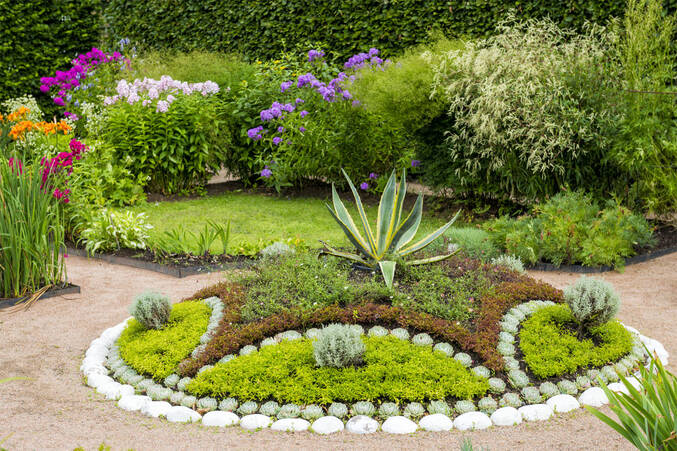Photographs: iStock
Dry landscape garden creates a unique environment if you carefully arrange different features such as rocks, plants, etc. Rock garden is a form of dry landscape that gives a close to nature look. Dry landscaping also promotes sustainability with the use of native plants and natural materials and does not require much maintenance. Architect Juilee Deoskar lists factors to look out for to beautify garden through dry landscaping.
 Plants in decorative pots add drama to the space.
Plants in decorative pots add drama to the space.  Hanging plants rather than placing them on the ground gives a different look and feel to the space. It is also flexible to move them around as and when required.
Hanging plants rather than placing them on the ground gives a different look and feel to the space. It is also flexible to move them around as and when required.1. Materials: Natural stones, vitrified tiles or bricks are the preferred materials for dry landscaping. You can also use a combination of gravel or pebbles to cover the surface instead of lawn or any other plant material. Polished pebbles or pebbles with a natural finish are other options. Gravel, mainly stone chips (marble or kota), can also be used as an alternative for inorganic mulch. For concrete paving, water acquires a channel to drain through the gravel which in turn enables water storage and prevent storm water run-off. It is best to place the gravel or pebble bed on a fabric or geo textile sheet for better filtration purposes.
2. Planting material: Opt for drought-resistant species, such as cacti, agave and dracaena, that require less maintenance and can withstand extreme weather conditions. Also, trees like date, ficus and palm require comparatively lesser water intake. Grasses or succulents enhance the dry landscape look. To get an idea of the look and feel of these species they can be initially planted in pots instead of planting them directly on the ground. This makes it easier to move them as and when required. Similarly flagstone in combination with gravel can be laid in interesting patterns to create drama. If you need to give intermediate green areas, grasses or low level plantation can be planted at intervals between large stone paver and gravel. This also requires limited maintenance. However, the density (that's determined by sizes) of gravel or pebbles need to be such that water is properly drained as water collection in these areas might cause formation of algae.
 Stones or pebbles are preferred alternatives for dry landscape. Different colours can be used to beautify the space.
Stones or pebbles are preferred alternatives for dry landscape. Different colours can be used to beautify the space. 3. Safety:
For safety purposes, use non-slippery materials. Sandstone is one of the options that do well in dry areas like Rajasthan or Delhi. Avoid using it in outdoor areas like Mumbai as it catches moisture and develops algae, making it slippery. Stones like natural kota or granite can be used in locations like Mumbai or Chennai. Poisonous plants like dieffenbachia or mother-in-law's tongue need to be avoided in residential gardens as it has leathery and sword-like leaves that can lead to injuries. Pebbles are preferred over gravel chips for their roundness. Also river wash pebbles make it easier and more convenient to walk on gravel chips. These can act as reflexology paths.
4. Elements: Place plants strategically in decorative pots (example ceramic or stone) to create interest. These look very pretty when lit up during night. Randomly placed stone boulders again lit up at night can serve as interesting feature and enhance the dry landscape character. Sculptural pots with plants or sculptures along with elements like stone boulders lit up at night, placed in a corner can change the whole look of the space.
Looking for property portal?
Leave your comments
Comments
Sarah Smith
2016-08-15 23:53:33I want to do some landscaping in my yard. Thanks for the advice about going with drought-resistant plants that require less maintenance. I would also consider consulting with a landscape designer to help you design your garden so that it's perfect. http://ogroots.net/services.html


















